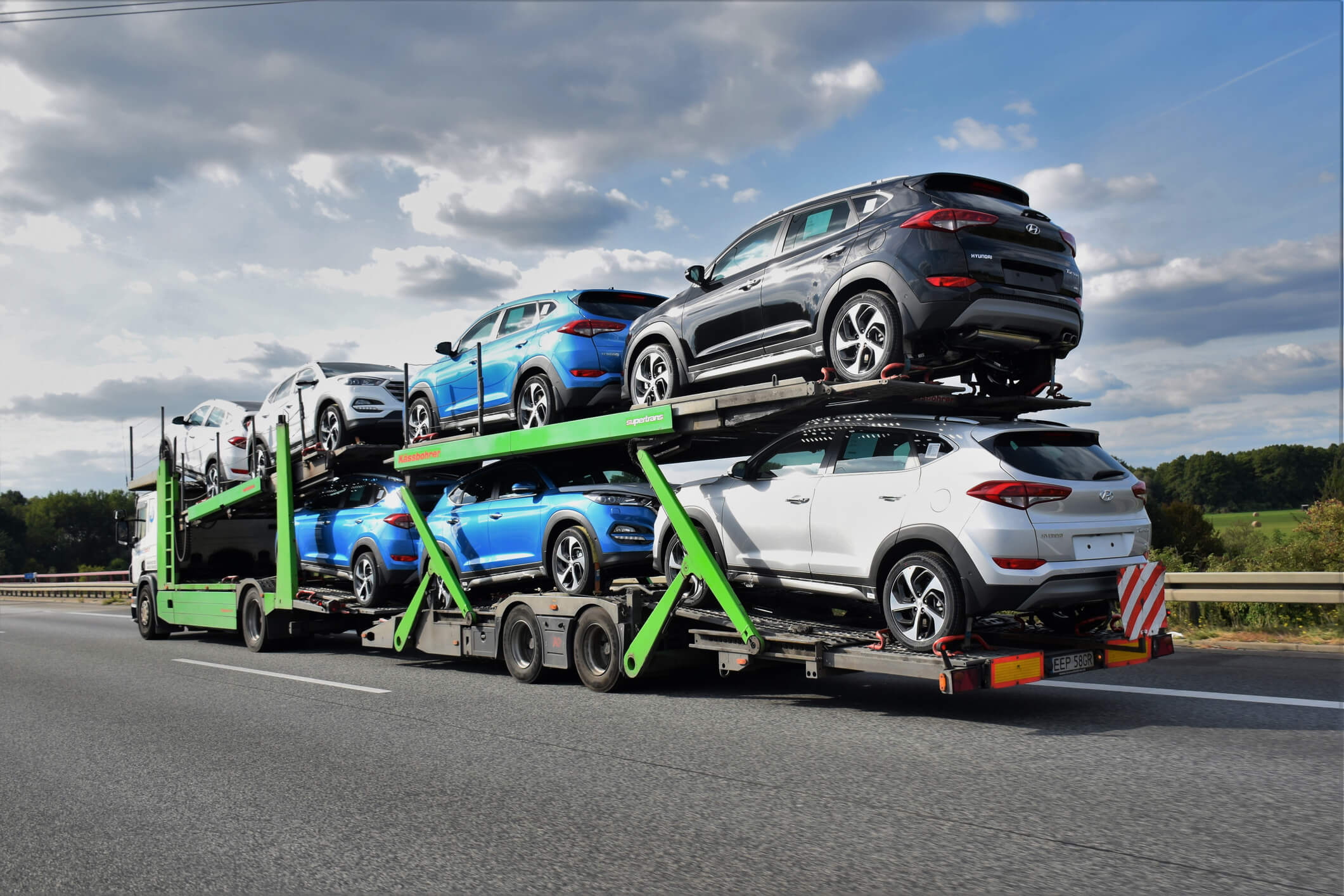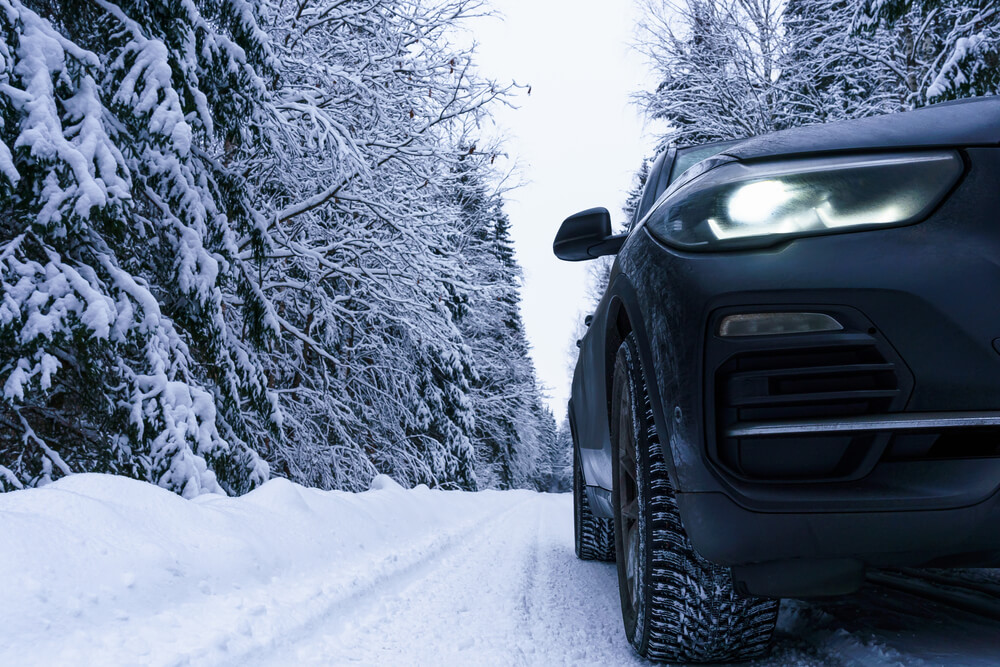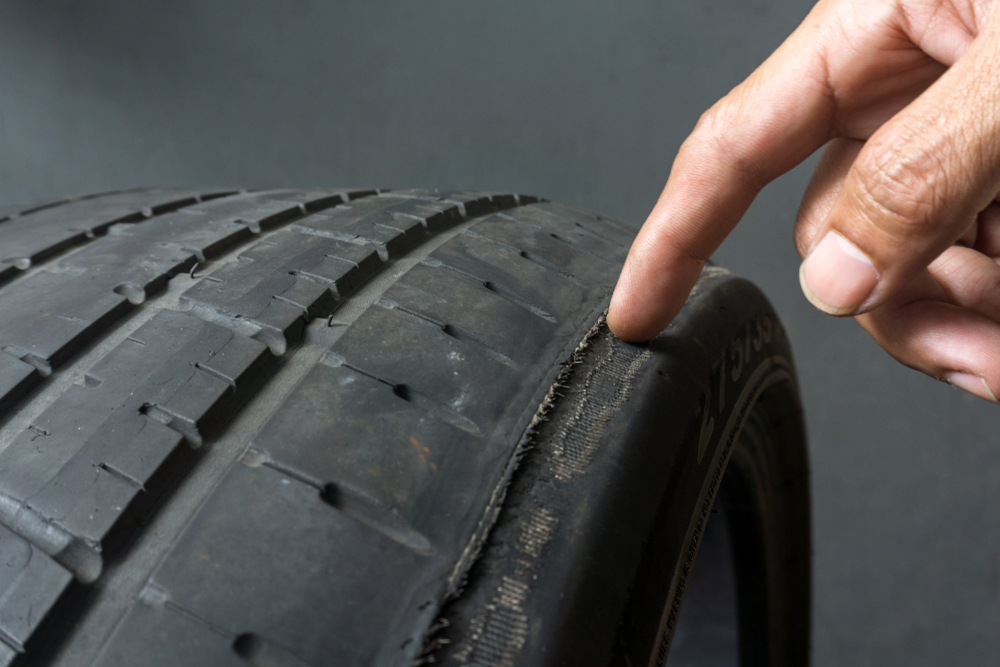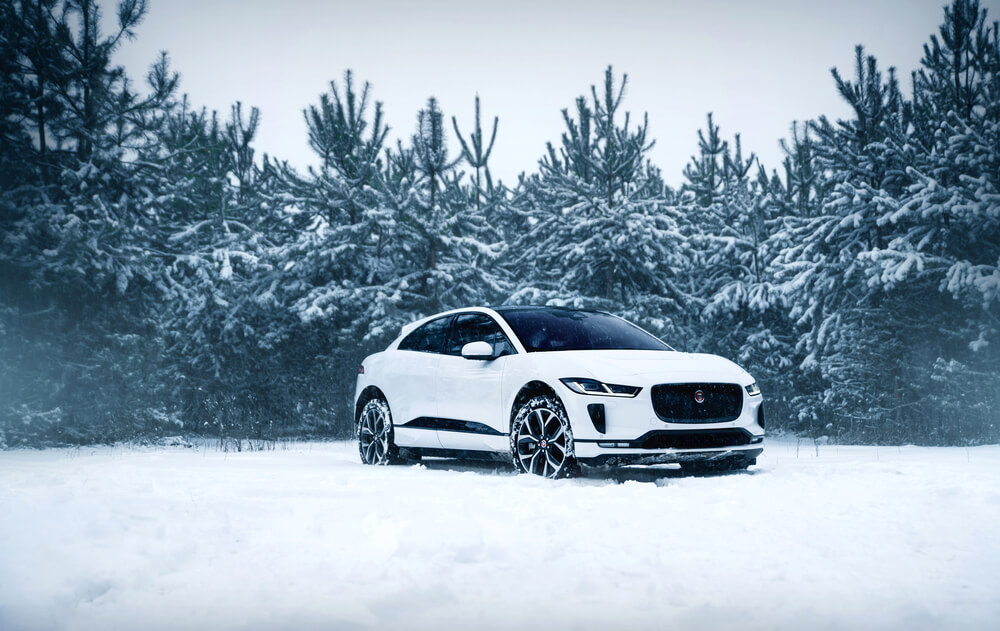
In the winter, nothing is more important than keeping you and your family safe on the road. Unfortunately, there are 156,164 crashes every year on icy roads due to two significant factors: poor road conditions and a lack of preparation for bad weather.
However, there are easy steps you can take to stay safe when you drive in snowy weather. When the seasons change and the roads begin to ice, it’s in your best interest to adapt your vehicle to the winter weather.
Not every car is suitable for driving on the road in factory condition, so follow this guide to make sure you outfit your vehicle with proper safety standards to make your snow driving and winter treks as safe as possible.
Type of Drive Systems
All driving systems have their pros and cons. But in the winter, it’s essential to have the right driving system for the snowy weather. Drive systems are a key feature to keep in mind when buying a new car, but it is possible to adapt your car afterward.
Most car and tire experts recommend four-wheel drive (4WD) or all-wheel drive (AWD) for winter conditions.
Four-Wheel Drive
4WD, or four-wheel drive, is a drive system that powers all four tires simultaneously to conquer road conditions. With this system, all the tires spin at the same speed by locking the front and rear axles in 4WD. Moving four wheels in unison reduces wheel spin when a tire is stuck or losing traction on the road.
So, when you activate 4WD and lock the axles, you double the traction of a two-wheel-drive (2WD).
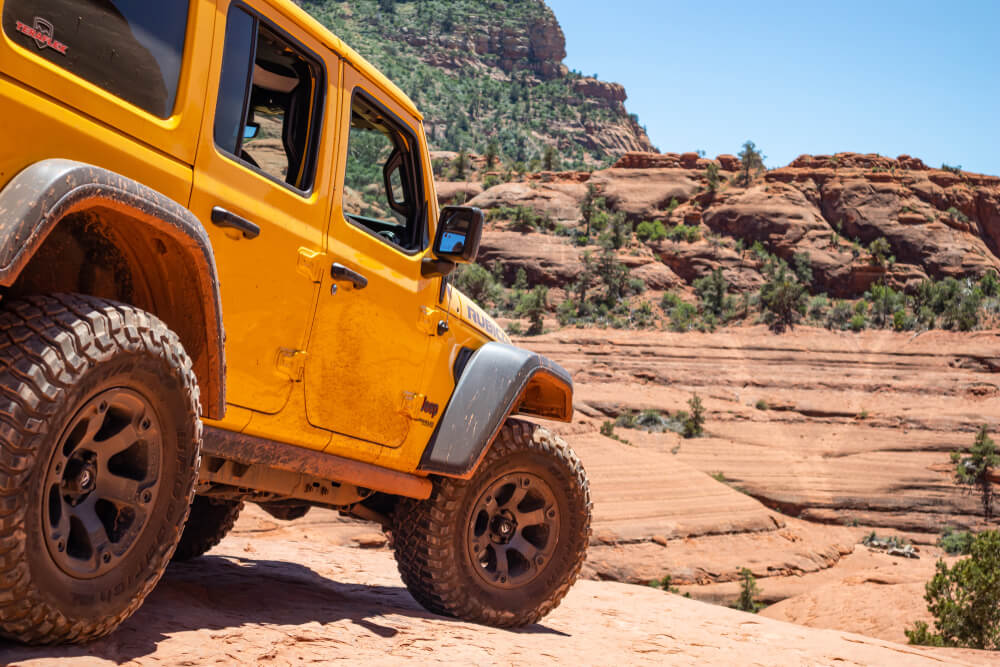
Many 2WD vehicles have a 4WD component, and all you have to do is turn it on or off. Leaving 4WD on all the time may affect your drivetrain and cause problems with your car. To avoid unnecessary wear and tear on your vehicle, only activate the 4WD option for poor road conditions like ice, snow, and rain.
Since 4WD powers all tires at the same speed and spin rate, your gas mileage will decrease. 2WD allows you to get more miles per gallon because only two tires are powered, and kinetic energy powers the other two tires.
All-Wheel Drive
AWD, or all-wheel drive, is similar to 4WD but operates slightly differently. The most significant difference is that you can turn off 4WD, but you cannot turn off AWD–it’s always on regardless of the weather. This constant use of power is also why AWD vehicles traditionally have lower miles per gallon (MPGs).
Since AWD operates based on traction, all four tires receive the same power when you drive on a dry, clean road. If you move on a compromised surface–like snow, ice, or rain–the car detects which tires have the best traction and sends more power to them.
AWD overcomes the tire with no traction by sending more energy to the tires with optimal traction. This split-second decision calculated and executed by your car protects your life more than you realize.
The best way to know when this feature kicks in is to pay attention to your dashboard. Most AWD vehicles come with an adaptive driving system to operate the tires. When the system kicks in, you will see a warning light on your dashboard to alert you.
Two-Wheel Drive
While we don’t recommend 2WD for poor driving conditions, many cars with 4WD operate as 2WD vehicles when the 4WD feature is disengaged. It’s important to know if your vehicle is 4WD equipped and how it works in 2WD if you don’t turn on 4WD. There are two options for 2WD:
Front-Wheel Drive
Front-wheel drive is a type of 2WD that powers the front tires. Since front wheels are better for overall control in most situations, think of this driving system like the front tires pulling the car along.
This drive system has some disadvantages: It isn’t easy to regain control if you slip while pulling something or regain control when a front-wheel-drive car loses control in snow, ice, or rain. Whatever you do, don’t hit the accelerator to restore stability in front-wheel-drive cars–it is a recipe for disaster.
But front-wheel-drive cars are not all bad news. It is the best driving system for the average driver in cities and suburbs because it has optimal control.
Rear-Wheel Drive
The other option for 2WD is a rear-wheel-drive system. Rear-wheel drive systems power the rear tires, so driving is more similar to a pushing motion. Since the car’s tire control is in the back and the engine remains in the front, the vehicle’s handling improves with even weight dispersion.
However, rear-wheel-drive vehicles easily fishtail in poor driving conditions with rear-wheel drive. To avoid accidents or lose control, activate your 4WD option in bad weather.
Safety Features
Every year, vehicle manufacturers find ways to make their cars safer for passengers and others on the road. Some of these safety features are so good that the law requires them.
A few tried and true features include airbags, an anti-lock brakes system (ABS), traction control, and seat belts. Some of these features are particularly beneficial in gloomy road conditions.
Anti-Lock Brakes System (ABS)
An anti-locking braking system prevents brakes from completely locking up when in icy conditions. When you slam on the brake pedal, the brakes typically lock up until you regain control of the vehicle and slow down.
However, when brakes lock in poor conditions, your tires turn into ice skates–there is no way to regain control until the car stops on its own.
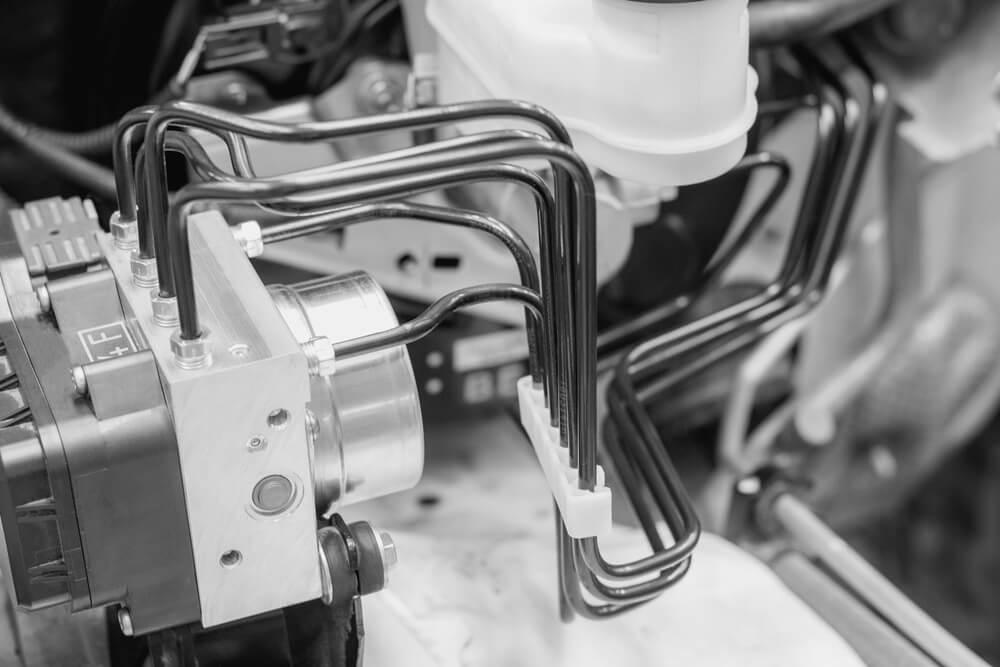
Antilock brakes help prevent those situations. ABS fluctuates between braking and not-braking to slow the car down. When ABS activates, it pulses the brakes enough to prevent locking.
Though ABS is required in all vehicles, this system is best for the average driver. Professional drivers, on the other hand, know how to pulsate the brake without the use of ABS.
Traction Control
Traction control is one of the systems used to prevent a car from slipping by decreasing power output to a free tire and focusing the power on the tires with traction. This feature is similar to AWD, but it’s circumstantial. Where AWD is always on, traction control only initiates once the vehicle senses a lack of control.
Stability Control
Stability control comes into play once a car starts sliding. Your vehicle will detect which tires need assistance and put power into those tires to realign. While it sounds similar to traction control, stability control uses more computer programming to keep you and your car safe.
Adaptive Headlights
In bad weather, adaptive headlights are crucial for safe driving. Because of the benefits, many manufacturers install adaptive headlights. There are two options for these headlights:
- The headlights “turn” like tires, so the headlights light the way wherever you drive.
- The car has sidelights near the headlights, and the direction you turn activates the corresponding sidelight.
Blind-spot monitoring
The blind-spot monitoring feature is excellent all year round, especially in winter with dreadful conditions. When it is raining or snowing, visibility is a must. But it’s harder to see in those conditions. So, blind-spot monitoring identifies cars around you when it’s snowing, and the monitor will let you know if it’s unsafe to change lanes.
Heated mirrors
Options like heated mirrors may seem like an unnecessary luxury for those who live without ice and snow, but it is a must-have accessory for people in harsh winter conditions.
Sometimes scraping and defrosting your windshield and mirrors isn’t enough: They stay blurry, and you just can’t see everything. Since side view mirrors are necessary for winter driving, it’s crucial to maintain total visibility.
A heating system within the mirrors melts the ice, ensuring that you can see everything around you.
Remote start
Car companies first introduced the remote start feature in 1980, but it has grown increasingly popular over the last 10-15 years. The increasing popularity of remote starts is for a good reason: The remote start lets you set the preferred temperature, turn on the defroster, and warm the engine.
With the help of the remote start, your car will be ready to drive the second you sit in the driver’s seat. Some cars even have heated seats that turn on with the remote start which will further enhance your winter driving experience.
The Best Snow Tires
Tires are the most crucial safety feature: If your tires don’t have tread or are the wrong type, your other safety features will be less effective. The tires are the only parts of a car touching the ground. So, you need adequate contact with the ground to achieve optimal safety and maximize traction.
That’s why the right set of tires makes all the difference for snow driving.
Winter tires
Depending on where you live in the country, you can have all-season tires or summer tires on your car for 8-10 months out of the year. For the other 2-4 months, you should have winter tires.
Winter tires are more than brand new tires: Tire companies specifically design and manufacture them to handle winter weather and terrain. Winter tires use flexible rubber with a softer tread. The increase in flexibility and softness lets water and snow get in between the tracks to help the tire stay in contact with the road.
If the tread is too small, like for all-purpose tires, your car will lose connection with the road and increase your chances of getting into an accident.
One of the great things about winter tires is that you don’t have to replace them yearly. Since they don’t harden in colder weather as fast as regular all-purpose tires, you can store them in a garage until you need them the following year.
Nonetheless, you should wrap them in a bag to ensure they don’t crack or dry out, especially if you experience warmer summers.
Although it’s essential to change your tires for the colder season, choose a tire designed for your daily driving needs. There are two main winter tires: snow and ice tires.
- Snow tires – Tire companies make these tires specifically for city driving. They have broader and deeper treads that keep the snow from interfering with ground contact. Since city driving often has snow buildup on roads, it’s vital to equip your vehicle with the right tires to prepare for less suitable conditions.
Ice tires – Tire companies manufacture ice tires for highway driving. These tires focus on tread patterns to ensure your safety if you drive over ice. Since snow rarely collects on the highway, there is less concern about tread width.
Should You Use Chains or Studded Winter Tires?
For the most part, chains are illegal to use on many roads. They damage the pavement on the roads and can create more problems for the transportation department than necessary.
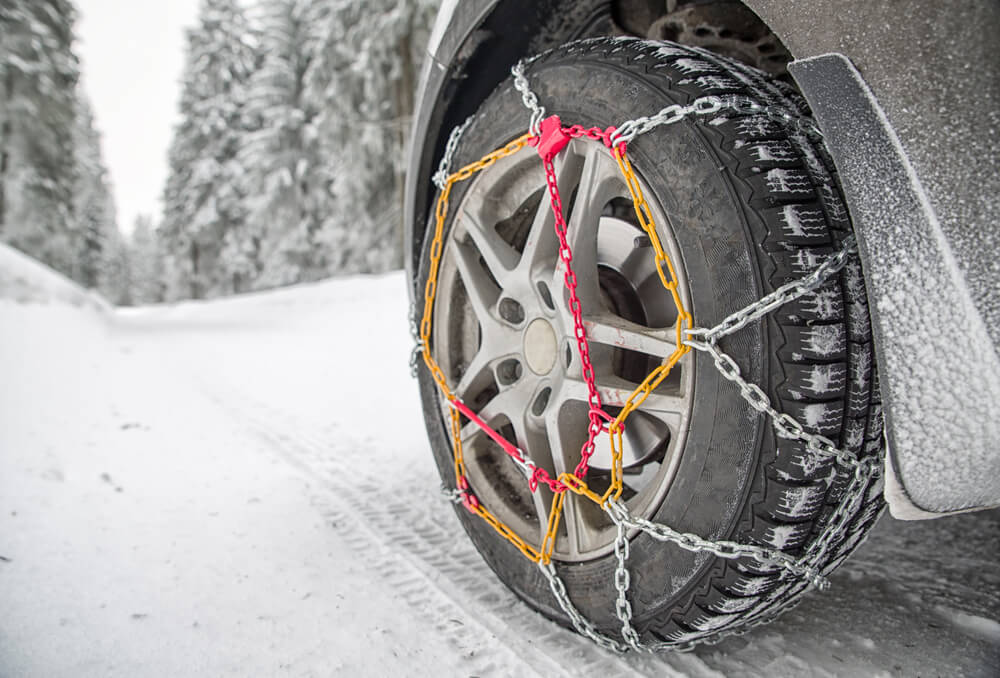
However, some cities and highways allow chains, and some even encourage drivers to use chains. These highways are typically only located in areas with rough terrain in inclement weather.
On the other hand, studded winter tires are much better for roads. Studs are cylindrical pieces of rubber that penetrate the deep snow to maintain contact with the road. Studded tires are great for conditions with a lot of snow and ice. But, once the roads clear up or the snow gets packed down, studless tires work well.
Conclusion
A good snow car has three main things: AWD or 4WD, tons of safety features, and winter tires. With each of these things, you increase your safety and the safety of others on the road.
If you want to avoid driving during the winter months but still need to move your car, Guardian Auto Transport can help you. We know that you don’t always get to choose when you move, and moving during the winter is not ideal.
But, don’t stress yourself out with winter driving. Let the crew at Guardian Auto Transport help you today. Visit our website for a free quote.
